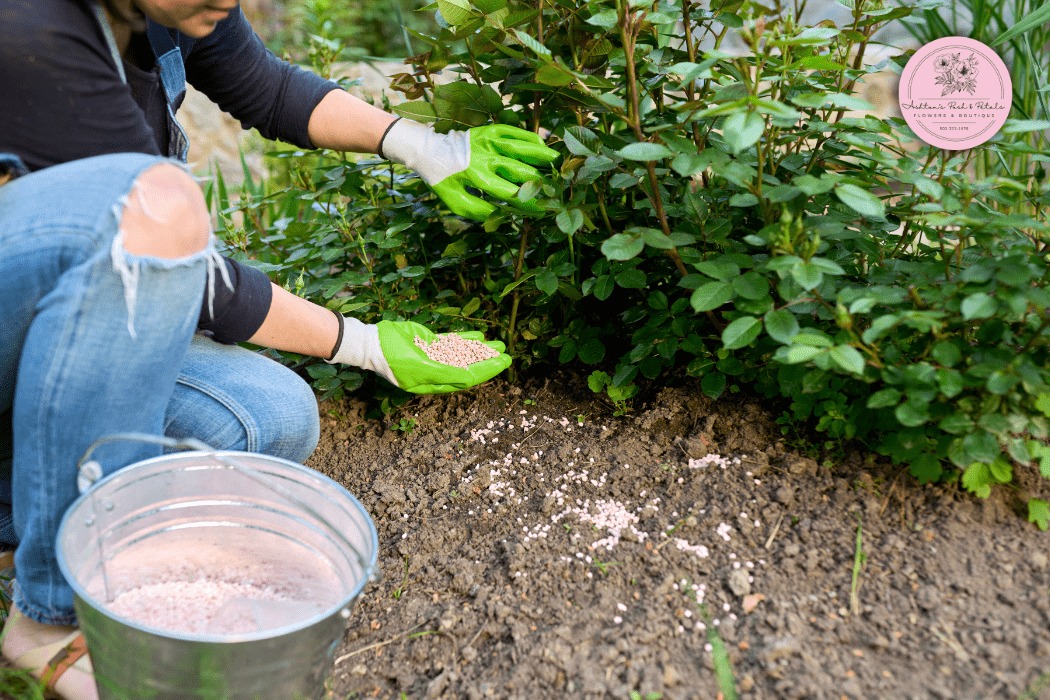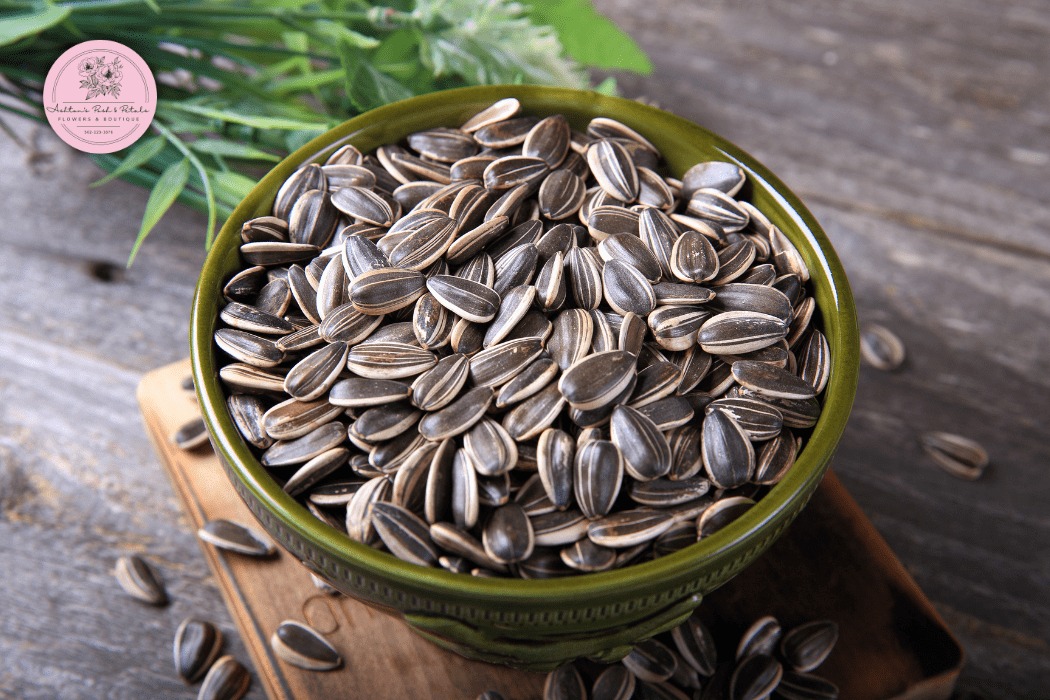How to Care for Sunflowers | Easy Growing Guide
Learn how to care for sunflowers with simple tips on planting, watering, and harvesting. Grow healthy, bright blooms effortlessly at home.

Sunflowers are some of the world's happiest and most recognizable flowers. They are a common choice for gardens, balconies, and farms because of their large, beautiful yellow flowers and tall, green stalks. But you have to learn how to take good care of them if you want to develop beautiful and healthy sunflowers. With their seeming simplicity, sunflowers require care, perseverance, and ideal growth circumstances to reach their full potential.
Every stage of sunflower care, from sowing seeds to seeing them strong and blooming, will be covered in this article. This article will guide you through all the steps of how to care for Sunflowers, whether you're growing them in your yard or in containers. Let's check how to take care of sunflowers:
Sunflowers Introduction
It's important to have some basic knowledge about sunflowers before learning how to take care of them. Heliotropism is the term for the normal behavior of sunflowers, which are members of the Helianthus family, to turn their heads toward the sun. These flowers require warmth to flourish and adore sunlight.
There are many different types of sunflowers, from plants that are small enough to fit in pots to giants that stand over ten feet tall. Summer sunshine is what they like best. Knowing your type of sunflower will help you decide how much space, water, and care they need.
What is the Right Location to Grow Sunflowers?

The secret to caring for sunflowers is to choose a sunny area because they love the sun. Choose a spot that gets at least six to eight hours of direct sunlight each day. The flowers will be weak and produce fewer blooms if there is little sunlight.
Select an open area free from trees or high structures if you're growing them outside. If you're growing them in pots, place them on a balcony or beneath a sunny window where they'll get full sun. Remember, they will be taller and healthier the more sun they get.
Method of Growing Sunflowers
From preparing the soil to seasonal care, we will walk through each step that can help in growing sunflowers. It’s totally up to you whether you are growing seeds in your backyard or in a decorative container. Let’s understand the perfect process of how to maintain a sunflower in a pot or yard:
Step 1: Preparing the Soil
The secret to healthy sunflower growth is nutritious soil. Sunflowers prefer loose, nutrient-rich soil that drains well. Before planting, till the soil and mix in some compost or organic waste. This gives plants natural food and improves the soil's quality.
Make sure there is enough drainage because sunflowers dislike very wet soil. The roots are going to die if the soil stays wet. The ideal soil types are sandy or loamy. The pH will range from 6.0 to 7.5, which is slightly acidic to neutral. A simple soil test kit can be used to verify this.
Step 2: Planting Sunflower Seeds
It's time to plant after your soil is ready. Hold off until the weather is warm and the last frost has passed. Make small, one-inch-deep holes in the ground. Plant a single seed in each hole and gently cover with earth.

Give your sunflowers some room if you are growing more than one; for smaller plants, this means spacing them around 12 to 18 inches apart, and for larger plants, up to 2 feet. This area prevents illness and allows air to circulate. After seeding, thoroughly water the seeds. You should see little seedlings appear within 7 to 10 days.
Step 3: Watering Sunflowers Properly
For sunflowers to be healthy, they need the right amount of water. They would rather not be very wet or dry. Water them often enough to keep the soil slightly wet when they are young. Water the plants thoroughly once or twice a week as they get taller and stronger.
Because water-retaining leaves are often favorable to fungi, water the base of the plant rather than the leaves too much. Water more often in hotter or drier weather. It's time to water again if the topsoil feels dry to the touch. Watering carefully but deeply is a good result. The plant will be better able to deal with heat and drought as a result of the deeper roots.
Step 4: Feeding and Fertilizing

Sunflowers are easy to grow, but they do need high-quality nutrients. Timely fertilization keeps them healthy and encourages large flowers. Add organic fertilizer or compost to the soil before planting. In this way, the seeds get a jump start.
As they get older, you can use a balanced, slow-release fertilizer to give them additional feeding every few weeks. Stay clear of over-fertilizing since too much nitrogen produces many leaves but few blooms. If you wish to plant organically, use natural liquid fertilizers made from seaweed, organic compost, or kitchen waste.
Step 5: Supporting Tall Sunflowers
Some sunflower varieties can grow extremely tall and may need extra support to prevent falling over. Tie your sunflowers loosely to a bamboo or wooden pole if they start to sag. Using a soft rope, loosely tighten the stake while standing it near the base of the plant.
Tying too firmly can harm the stem, so avoid doing so. Your sunflowers will remain straight even in the event of heavy rain or wind thanks to this support system. Although smaller or dwarf varieties typically don't require assistance, it's wise to monitor them as they develop.
Step 6: Protecting Sunflowers from Pests

Sunflowers are attractive to insects as well as people. Common insects that will try to eat the petals and leaves include beetles, caterpillars, and aphids. The seeds will also be eaten by squirrels and birds. Check your plants frequently to protect them. If you discover small insects or holes, spray them with a solution of powdered soap and water.
Strong chemicals should be avoided because they are harmful to plants. Once the seeds start to form, the flower head can be covered with a light net to keep birds or squirrels away. Healthy sunflowers are better able to fend off pests, so making sure they have enough water and nutrients also assists in preventing insects.
Step 7: Pruning and Maintenance
Pruning is the process of removing damaged or outdated plant parts to encourage new growth. Sunflowers don't need much pruning, but removing wasted blooms or dying leaves lets the plant focus its energy on growing new blossoms. Remove the dead flower heads from your sunflowers before they start to generate seeds if you need them to keep blooming.
Instead of wasting energy on seeds, this will cause the plant to create more blossoms. Ensure that the area surrounding your plants is clear of weeds and clean. Regular weed removal will keep your sunflowers healthy and strong because weeds steal water and nutrients.
Step 8: Harvesting Sunflower Seeds
Sunflowers must be allowed to dry and turn yellow or brown on the back if you are planting them for seeds. The seeds are ready at that point. After removing the plant's head, hang it upside down for about a week in a dry, well-ventilated place. Gently wipe the seeds from the bloom head once it has dried.

You can roast them for a healthy snack or plant them the next year. Store the seeds in a dry, cool place in an airtight jar. The most satisfying part of growing sunflowers is harvesting, which allows you to witness the results of your hard work.
Step 9: Caring for Potted Sunflowers
Sunflowers can be grown in pots if you don't have a garden. Because sunflower roots grow long, choose a deep one. For the water to flow out, the pot needs holes in the bottom. Place the pot in direct sunshine and use a lightweight potting mix.
Don't let the soil get wet, but water it often enough. Considering how quickly pots dry up, potted sunflowers may require more watering than garden sunflowers. They stay green by applying fertilizer or compost once a month. To create room for new growth, trim off the blossoms when they are gone.
Step 10: Enjoy the Beauty of Sunflowers
In addition to being beautiful, sunflowers bring happiness wherever they are planted. Their tall, beautiful faces brighten any space as they follow the light throughout the day. You can pot them to brighten up your balcony or plant them in rows to create a sunny border.
Additionally, they draw birds, butterflies, and bees, which improve pollination and liven up your garden. Sunflowers bring happiness every morning as the sunlight reaches their petals, which is why many people grow them.
How to do Seasonal Care?
How to plant and take care of sunflowers is the easiest to acknowledge. As seasonal plants, sunflowers often grow in the summer. The plant begins to dry out on its own when the blooming season is over. You can either remove it or get the soil ready for the following planting season, or you can leave it for the seeds to mature.
After removing the old plants, remove any leaves and add fertilizer to the soil. The soil is renewed for the following time. After a few weeks, you can sow fresh seeds again if you live in a warm region.
Common Problems and How to Fix Them
Sunflowers can occasionally be difficult, even with the right care. Your sunflower may be overheated or thirsty if it is turning downwards. Give it plenty of water and give it some shade during the day. The plant may require additional nutrients if the leaves are yellow.
Fertilizer or compost usually fixes it. In some cases, yellow leaves can also be caused by overwatering, so check the soil moisture first. Fungal infections can cause white or gray patches on leaves. This is fixed by removing the impacted leaves and boosting airflow.
Conclusion
How to care for sunflowers is adaptable if you know what they need. They require frequent watering, healthy soil, sunlight, and a little care. Every stage, from planting to harvesting, brings you one step closer to watching their golden flowers decorate your surroundings.
Sunflowers reward you with beauty and life while teaching you patience. Growing a single pot or a whole field will always remind you of growth, sunshine, and happiness.
FAQs
1. How often should I water my sunflowers?
Water them when the top layer of soil feels dry. Usually, once or twice a week is enough, but young plants may need more frequent watering.
2. Can sunflowers grow in pots?
Yes, sunflowers can grow well in pots as long as the container is deep enough and placed in full sunlight.
3. Do sunflowers need fertilizer?
Yes, adding compost or fertilizer helps them grow taller and produce larger blooms.
4. Why are my sunflower leaves turning yellow?
It may be due to overwatering or a lack of nutrients. Check the soil and add compost if needed.
5. How long do sunflowers live?
Most sunflowers bloom for about 2 to 3 weeks, but the whole plant lives for a few months, depending on the variety and growing conditions.

